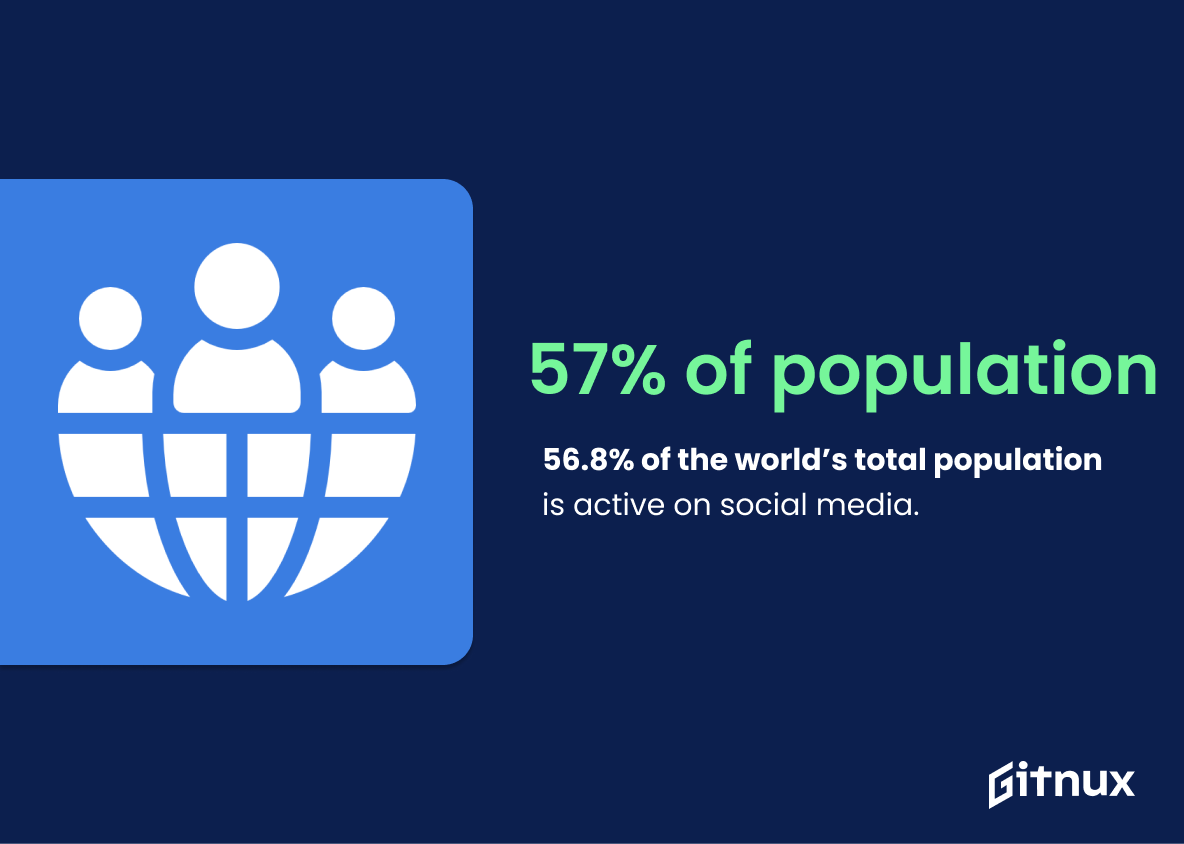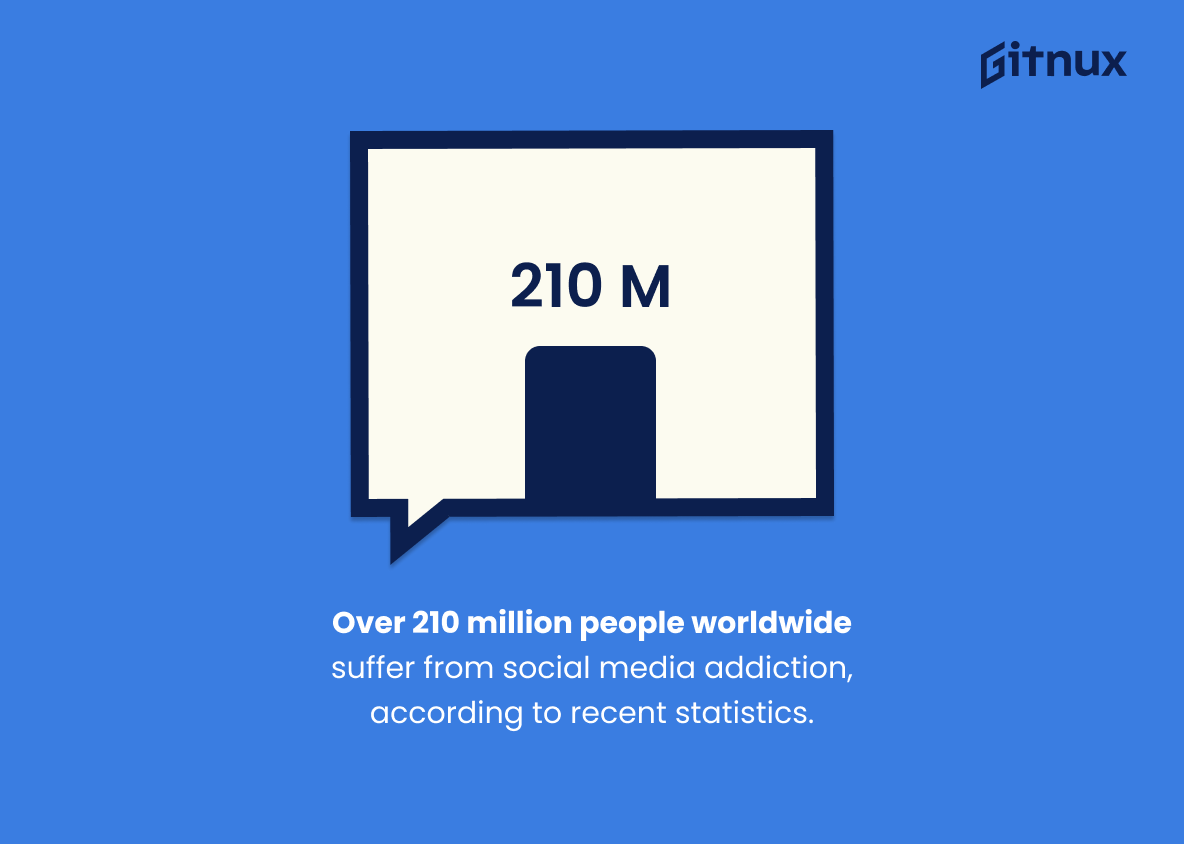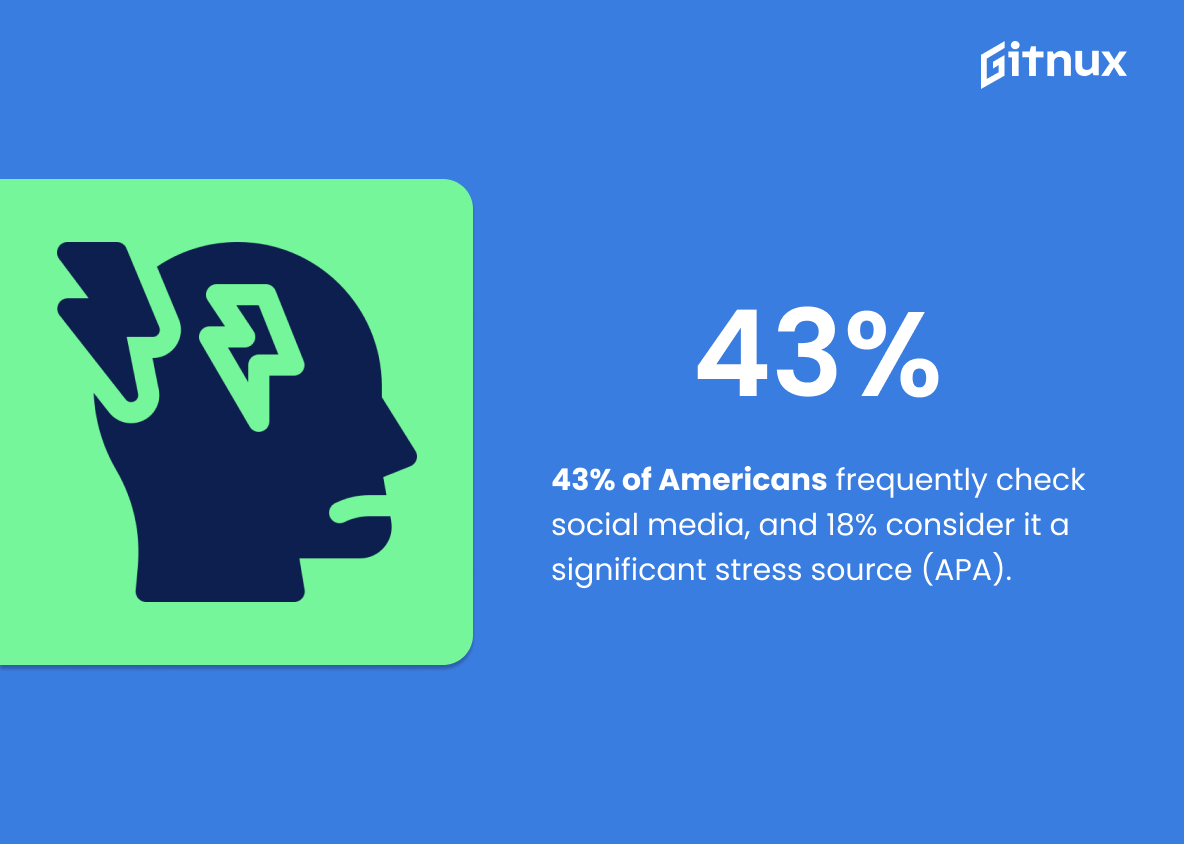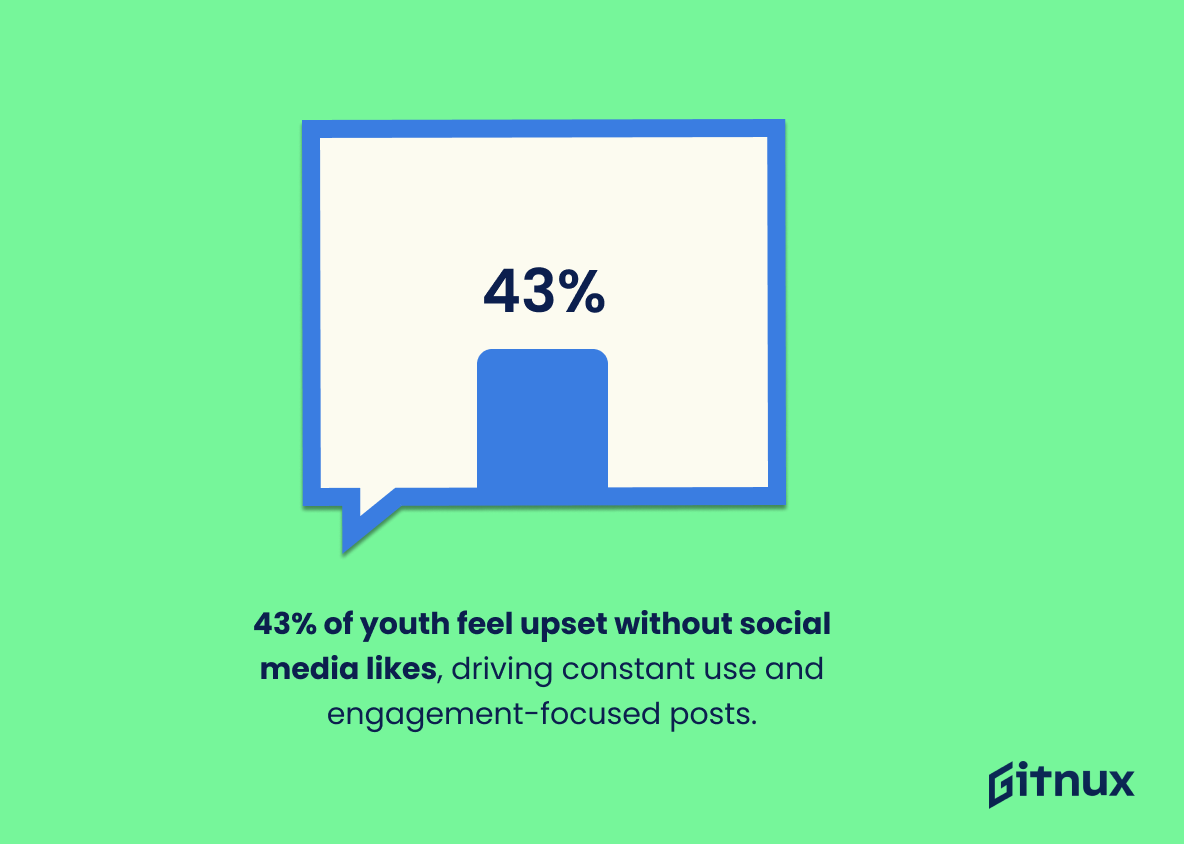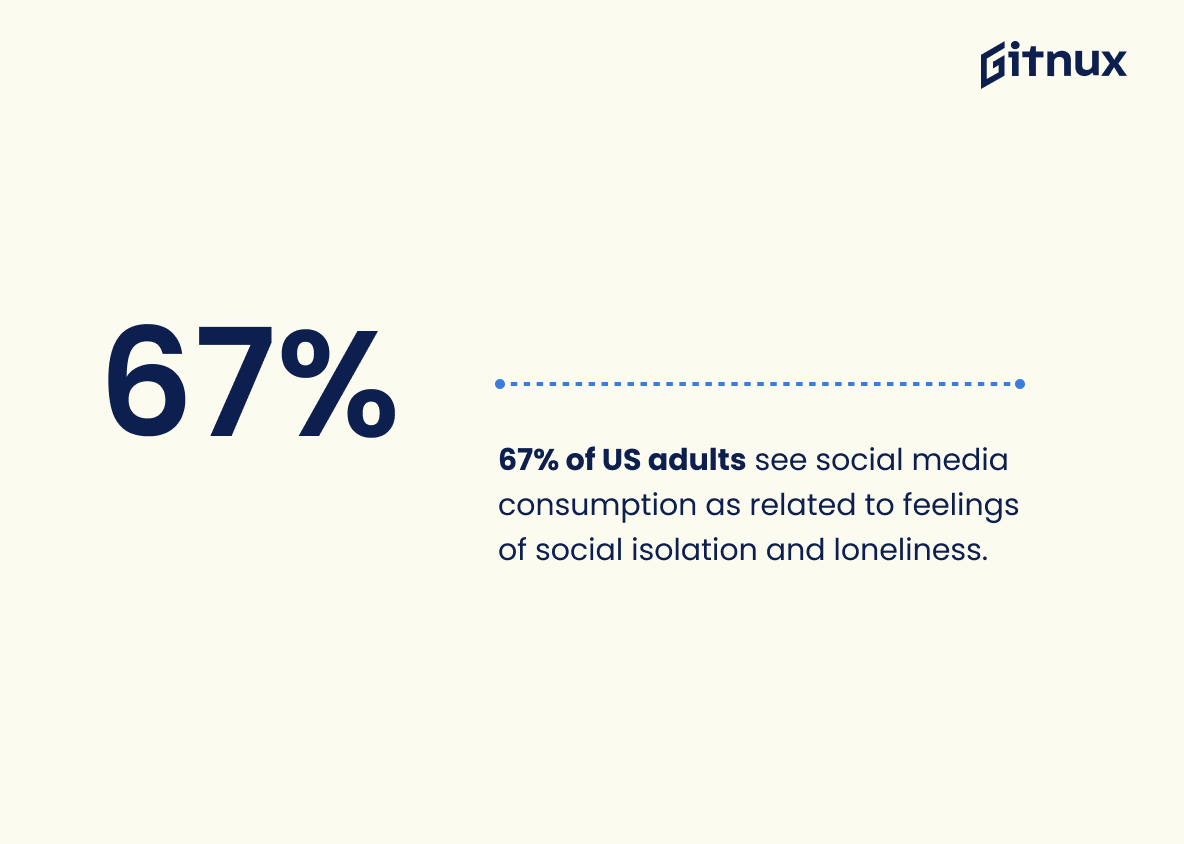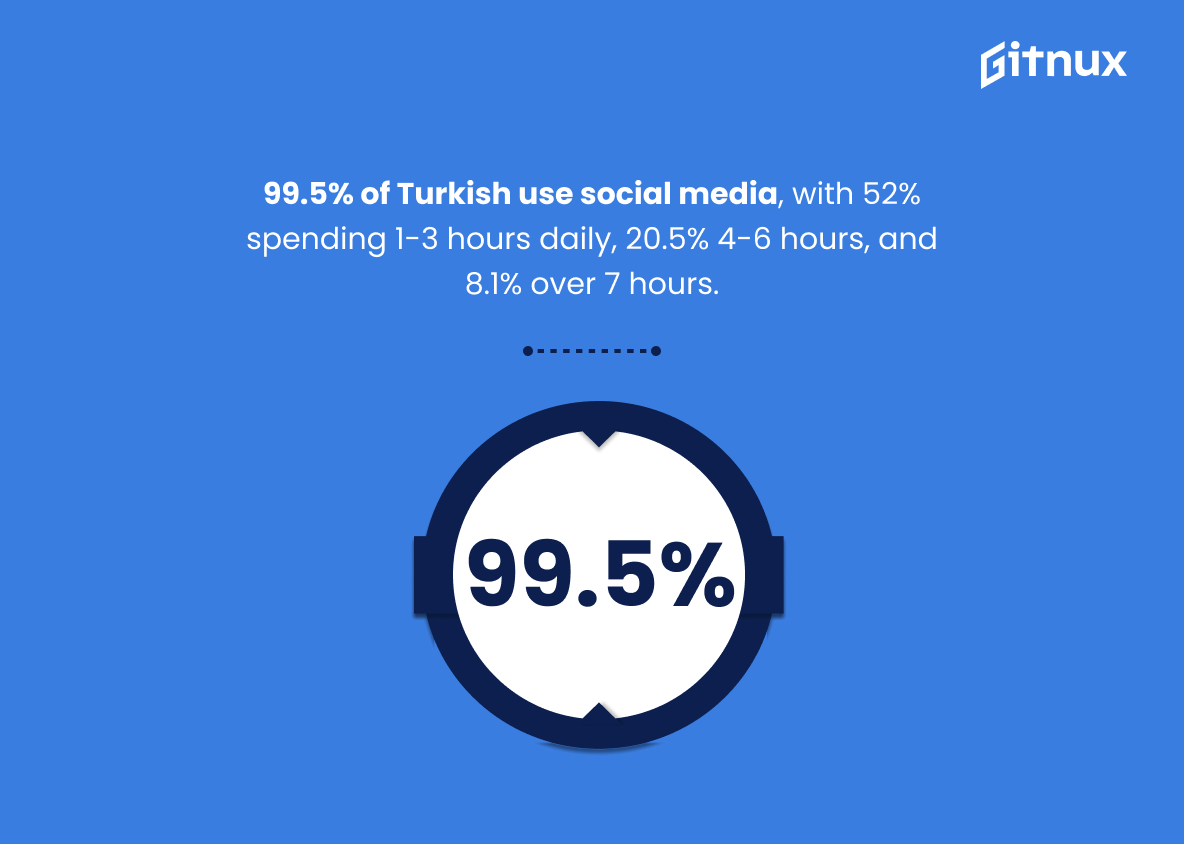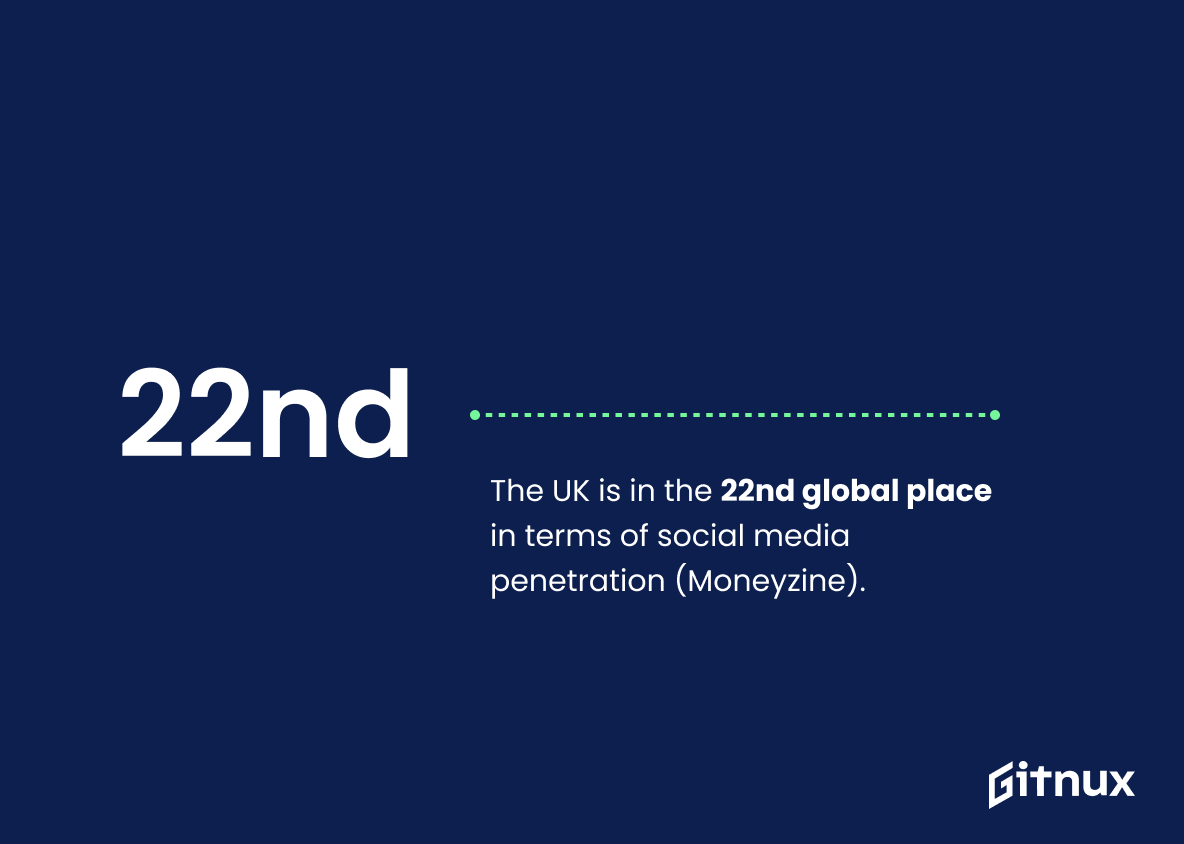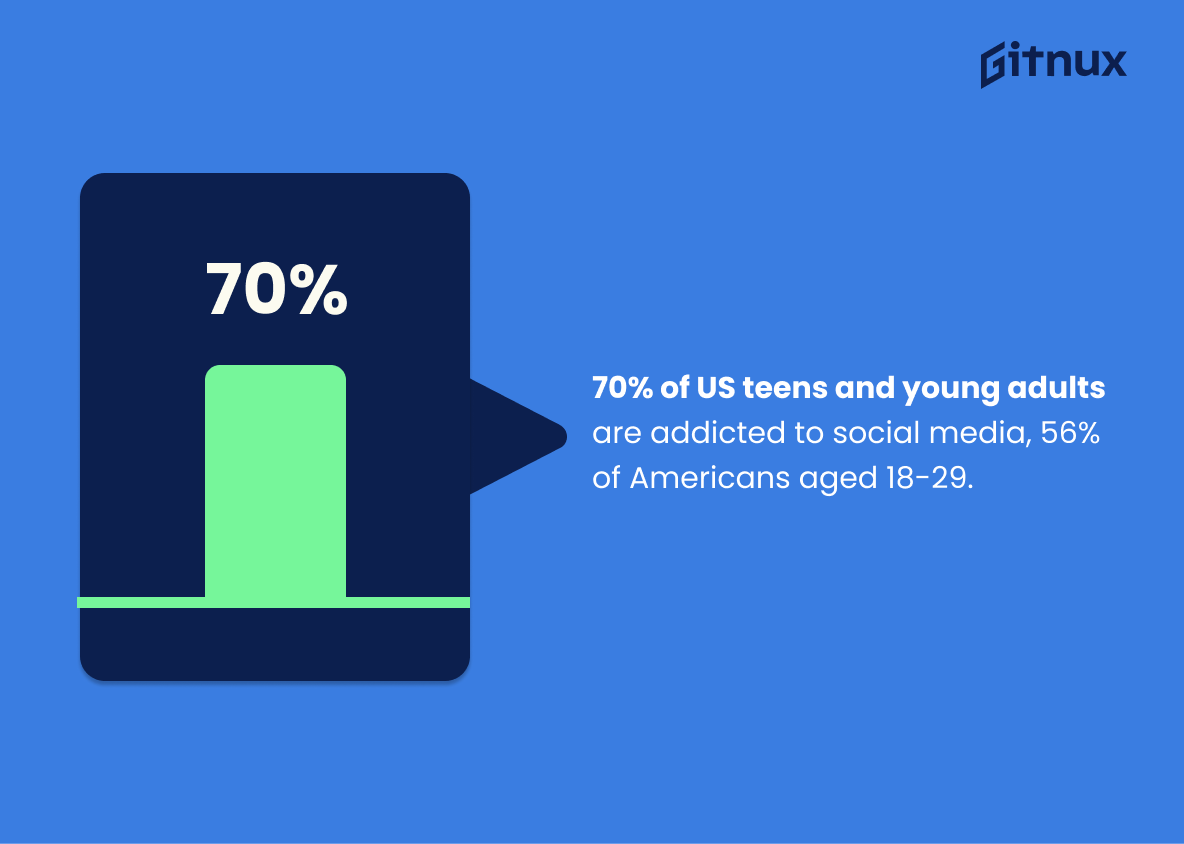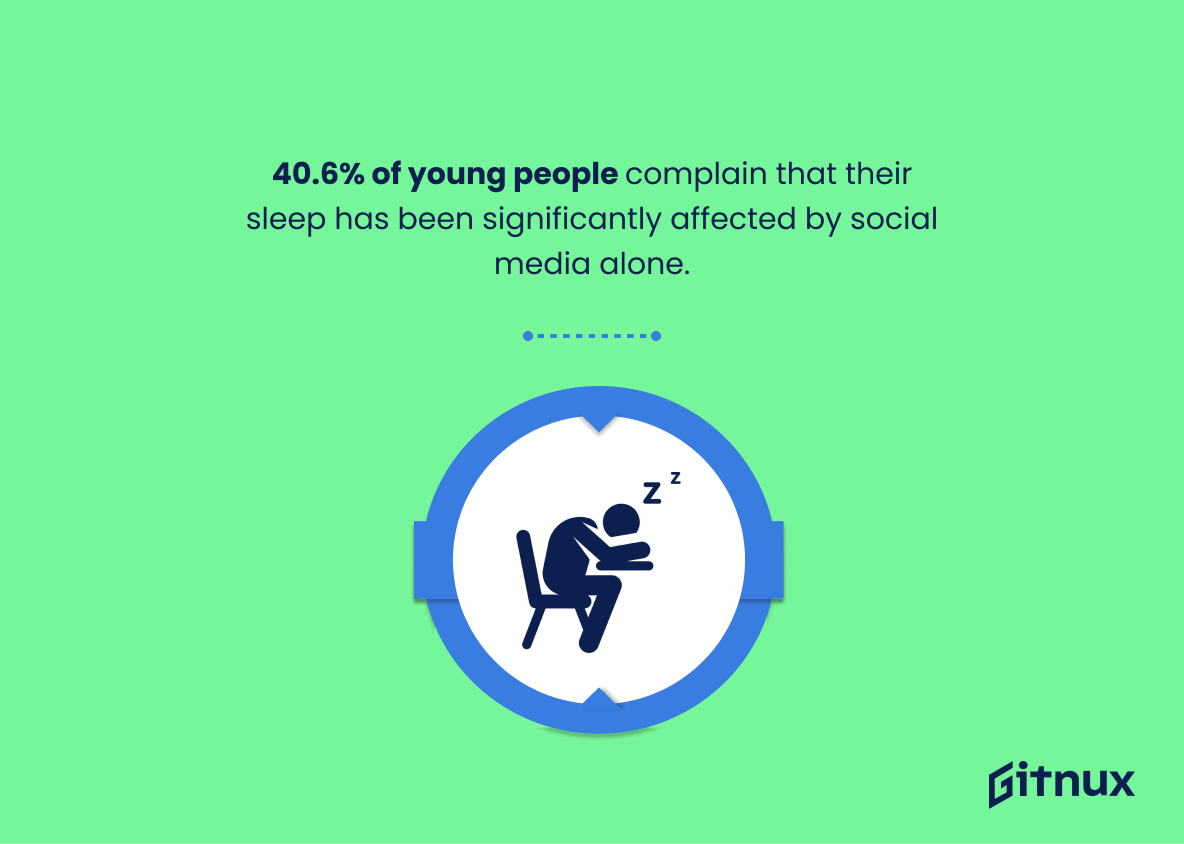Social media has become an integral part of our lives, with the majority of people using it on a daily basis. With this increased usage, however, comes the potential for addiction.
In this article, we will explore social media addiction statistics and the latest trends surrounding it, looking at the prevalence of the issue, the demographics most affected, and the potential consequences of this addiction. We hope that knowing all this will help you to develop a healthier relationship with social media and combat this feeling of anxiety when you are not able to constantly check your media profiles.
Social Media Addiction: The Most Important Statistics
43% of Americans constantly check social media, and 18% find social media a significant source of stress
Teens who spend more than 5 hours a day on their phones are 2x more likely to show depressive symptoms.
General social media addiction statistics
56.8% of the world’s total population is active on social media.
By 2025, the monthly number of active social network users is expected to reach 4.41 billion globally.
Over 210 million people worldwide suffer from social media addiction, according to recent statistics.
2.95 billion people globally, have access to social media only through smartphones.
In 2021, people aged 40 to 44 years spent the most time on social media applications of all user demographics, amounting to almost 60 minutes per day. People aged 19 years and younger spent on average 49.12 minutes on social media apps daily.
47% of internet users across 17 countries admitted their time spent on social media has increased during the Covid-19 pandemic.
Worldwide, women tend to use social media more than men. Women spend an average of 2.08 hours a day on social media, and men average 1.81 hours a day.
In the US, 47% of people consider themselves “addicted” to their phones.
The average person has 8-9 social media accounts. This has doubled since 2013, when the average person just had 4–5 accounts.
Adults spend 36% of their online time using social media.
43% of Americans constantly check social media, and 18% find social media a significant source of stress, according to the American Psychological Association.
The average person spends 144 minutes a day using social media, which converts into 72 hours a month, and 5.7 years of your life spent just on social media.
43% of young people feel very bad if no one likes their social media posts. This drives them to be using social media constantly and posting things that get engagement.
Social media disagreements between couples account for 1 in every 3 divorces. Facebook’s addiction statistics reveal this platform is involved in the vast majority of such marital disputes, 1 in 3 of which end in divorce, as reported by TrueList. In fact, divorce attorneys no longer shy away from using networking sites to derive data, which is then used as evidence.
67% of US adults believe that social media consumption is directly related to feelings of social isolation and loneliness. 38% believe that social media impacts mental health in a negative way.
70% of people report using social media after getting into bed, with almost 15% spending an hour or more doing so each night.
21% of adults wake up to check their phones during the night, leaving them at an even higher risk of losing sleep and developing a sleep disorder like insomnia.
Gen Z and Millennials are the biggest social media users of all age groups (84% and 81%)
Social media addiction statistics worldwide
74% of Americans feel uneasy leaving their phone at home. 71% check their phones within the first 10 minutes of waking up. 48% of people say they feel a sense of panic or anxiety when their cell phone battery goes below 20%. 45% say that their phone is their most valuable possession. 35% of Americans use their cell phones even while driving.
99.5% of survey respondents in Turkey said they use social media, and 52% are doing so between 1 and 3 hours per day, 20.5% between 4 and 6 hours, and 8.1% for more than 7 hours daily.
Southern Asia has the most significant difference between male and female users. Almost 3 out of 4 social media accounts are for men in this region. In all other regions, females are the biggest users, except for Western Europe, where it is even.
The UAE has a huge number of social media users compared to the rest of the world. 99% of all internet users in the UAE actively use and visit at least 1 social media website. South Korea, Taiwan, and the Netherlands are also big social media users. The big English-speaking countries such as the US and UK don’t feature in the top 15 countries in the world, according to Search Logistics.
Social media is a popular news source in many countries. Over 70% of adults in Kenya, South Africa, Malaysia, and the Philippines said that they used social media to access news.
Singapore has 5.3 million social media users out of a total population of 5.92 million, and this number is projected to climb to around 5.6 million by 2025. This means nearly every citizen of Singapore uses social media in some form.
66% of Singaporean children between the age of 7-9 use smartphones every day. A 2019 survey by Google, found that Singaporeans received their first connected device at the age of 8, which is 2 years younger than the global average.
84.3% of the UK population uses social media platforms. The United Kingdom is in the 22nd place when ranking all world countries in terms of social media penetration, according to Moneyzine information. The usage rate in the UK is well above the global average (45%) but still very far from countries like the UAE, which sits at 106.1% mainly because of fake or multiple social media accounts.
A study of Turkish university students found that 35.48% of students were addicted to social media, because most students use social networks to find reviews about services, including those that help with writing essays.
Who is influenced by social media addiction most?
Around 70% of teens and young adults in the US are addicted to social media. Approximately 56% of Americans aged 18-29 are addicted to social media.
Over 60% of college students in the US report being addicted to social media.
Young adults tend to be the most affected by social media addiction. It is significantly higher amongst young single women. 40.6% of young people complain that their sleep has been significantly affected by social media alone.
34% of young adults said that not being on social media caused them to feel like they were missing out on something.
A survey of young adults in the United States found that nearly 20% of respondents reported being “addicted” to social media.
Teenagers are the next largest group of people affected by social media addiction. Teens of 13-18 years old spend averagely 3 hours a day of their free time on social media.
Heavily social media-addicted teenagers spend up to 9 hours on social media every day, which works out to be 37% of their total time in 24 hours being spent on social media alone.
Teens who spend more than 5 hours a day on their phones are 2x more likely to show depressive symptoms.
7 out of 10 teens who use social media for more than 5 hours per day have a significantly greater risk of committing suicide.
10% of teens check their phones more than 10x per night.
48% of parents say that regulating their child’s screen time is a constant battle, and 58% worry about the influence of social media on their child’s physical and mental health.
As reported by Search Logistics, 27% of children who spend more than 3 hours a day on social media display poor mental health.
94% of parents say they take at least one action to manage their child’s technology usage during the school year.
It is estimated that more than half of the children aged 11 and 12 have personal social media profiles even though most social media platforms have a minimum age requirement of 13+ years old.
Check out our latest Technology Addiction Statistics
34% of female online users in the United States reported feeling addicted to social media, compared to 26% of men (and 7%).
The most popular social media platforms
Facebook has almost 3 billion monthly active users. It was the first social media platform to ever pass the 1 billion active user mark. Ever since its launch, Facebook has been the biggest social media platform when ranked by the active user base.
YouTube has 2.29 billion active users, according to Search Logistics. It is the world’s second most popular social media platform after Facebook. With over 2 billion monthly logged-in users and an estimated 1 billion hours of video consumed daily.
Instagram has approximately 2 billion monthly active users. Over 50% of Instagram users say that they enjoy seeing funny posts on Instagram, whilst 48% say they prefer creative content.
41% of children aged 4-18 worldwide use TikTok.
In Turkey, according to NCBI, 50.4% of people prefer Instagram, and 23.9% prefer Facebook as social media platform. 35.1% reported using it for getting information, and 58.3% for leisure and entertainment purposes.
Supplementary Statistics
210 million people are estimated to suffer from internet and social media addictions worldwide.
This is a global problem that affects millions of people around the world. It is a call to action to take steps to address this issue and to help those who are suffering from it.
Approximately 66% of those with social media addiction are aged between 12 and 35 years.
This statistic is a telling indication of the prevalence of social media addiction among the younger generations.
It highlights the need for greater awareness and education about the potential risks of overusing social media, particularly among those aged 12 to 35.
Around 10% of people experience symptoms of social media addiction.
It serves as a wake-up call to those who may be unaware of the potential dangers of overusing social media, and it highlights the need for further research and education on the topic.
67% of smartphone owners check their phones for notifications even when there are none.
Even when there are no notifications, the majority of smartphone owners still feel compelled to check their phones. They have become so accustomed to the idea of being constantly connected that they cannot help but check for notifications even when there are none.
Teens who spend more than 5 hours per day on social media are twice as likely to show depressive symptoms.
Spending too much time on social media can have a serious impact on mental health, and teens should be aware of the risks associated with excessive use.
It is a warning that should not be taken lightly and serves as a reminder that moderation is key when it comes to using social media.
Social media addiction is linked to higher levels of anxiety, depression, and poor sleep quality.
This addiction can have a serious impact on mental health, leading to increased levels of anxiety, depression, and poor sleep quality. This it emphasizes the need for individuals to be aware of the risks associated with excessive use of social media.
A study found that 25% of participants admitted using social media to escape from reality.
This highlights the prevalence of social media addiction and the need for greater awareness of the potential risks associated with it. It also serves as a warning to those who may be vulnerable to the allure of social media, and the need to take steps to ensure that it does not become a crutch to escape from reality.
In a survey, 71% of teens reported they use Facebook, 52% used Instagram, and 41% used Snapchat every day.
With 71% of teens using Facebook, 52% using Instagram, and 41% using Snapchat every day, it is clear that social media has become an integral part of their lives. This statistic serves as a reminder of the need to be aware of the potential risks of social media addiction and to take steps to prevent it.
50% of Gen Z and 42% of millennials feel anxiety when they can’t access their social media accounts.
For many people, being unable to access their social media accounts can cause a great deal of anxiety. This speaks to the prevalence of social media addiction and the need to be aware of the potential risks associated with it.
37% of people over the age of 65 in the United States use social media.
A large portion of the population is engaging in social media usage, even those in the older age bracket. Social media usage is not just a trend among younger generations, but is becoming increasingly popular among all age groups.
Social media addiction is more common among women (22.9%) compared to men (15.8%).
This highlights the disproportionate impact that social media addiction has on women. It suggests that women are more likely to be affected by the addictive nature of social media, and that more attention should be paid to the issue in order to help those affected.
47% of parents worry about their child’s social media addiction.
This highlights the need for parents to be aware of the potential risks of social media and to take steps to ensure their children are using it responsibly.
Among adults in the United States, 28% admit to having a social media addiction.
A significant portion of the population is struggling with this issue, and it is a problem that needs to be addressed.
84% of global social network users access social media using their smartphones.
The majority of social network users are now accessing their accounts through their smartphones, which means that they are constantly connected to their networks and can easily become addicted to the content they are exposed to.
55% of respondents check their social media accounts more than ten times per day.
A majority of people are engaging with their social media accounts to an excessive degree, which could have a detrimental effect on their mental health and wellbeing.
University students who use social media excessively have lower academic performance.
This statistic is a stark reminder of the potential consequences of social media addiction. It highlights the importance of striking a balance between using social media and focusing on academic pursuits. It serves as a warning to university students that excessive use of social media can have a detrimental effect on their academic performance.
Social media addiction is associated with reduced self-control and impulsivity.
This statistic is a powerful reminder of the potential consequences of social media addiction. It highlights the fact that those who are addicted to social media may be more prone to making impulsive decisions and have difficulty controlling their behavior. This is an important point to consider when discussing the dangers of social media addiction, as it can help to inform readers of the potential risks associated with this type of addiction.
72% of American teens use Instagram, and 69% use Snapchat.
With such a high percentage of teens using Instagram and Snapchat, it is clear that these platforms have become an integral part of their lives. This statistic serves as a reminder of the potential dangers of social media addiction and the need to be aware of its effects.
90% of young adults (18-29 years) use social media, while 82% of adults aged 30-49 use social media in the United States.
Social media is not just a platform used by young adults, but is also widely used by adults aged 30-49. This indicates that social media addiction is not just a problem among young adults, but is also a concern for adults in the 30-49 age range.
Conclusion
Social media addiction is a growing problem, with more and more people becoming psychologically dependent on likes, comments, and shares. The statistics show that this is a global issue, with people of all ages and backgrounds affected. To tackle this problem, we need to be aware of the risks and take steps to reduce our reliance on social media. We should be mindful of our own usage and encourage others to do the same. By understanding the risks and taking action, we can help to reduce the usage of social media and boost our mental and physical health.
FAQ
What is social media addiction?
Social media addiction is a type of behavioral addiction characterized by excessive use of social media platforms and websites.
What are the signs of social media addiction?
Signs of social media addiction include spending excessive amounts of time on social media, feeling anxious or irritable when not using social media, neglecting other activities or relationships, and difficulty concentrating on tasks.
What are the effects of social media addiction?
The effects of social media addiction can include feelings of depression and anxiety, difficulty sleeping, and difficulty concentrating on tasks.
How can social media addiction be managed?
Social media addiction can be managed by limiting the amount of time spent on social media, avoiding triggers that lead to excessive use, and seeking help from a professional if necessary.
What are the risks of social media addiction?
The risks of social media addiction include feelings of depression and anxiety, difficulty sleeping, and difficulty concentrating on tasks.
Resources
American Psychological Association: “Digital guidelines: Promoting healthy technology use for children”, cited January 2023. (Source)
American Psychological Association: “Treating the misuse of digital devices”, cited January 2023. (Source)
Commission Factory: “Singapore Social Media Statistics and Facts 2023”, cited January 2023. (Source)
Cross River Therapy: “121 Social Media Addiction Statistics Worldwide”, cited January 2023. (Source)
Exploding Topics: “25 Startling Social Media Addiction Statistics (2023)”, cited January 2023. (Source)
Medical Device News Magazine: “7 Medically-Backed Ways To Prevent Addiction In Social Media Users”, cited January 2023. (Source)
Moneyzine: “35+ Compelling UK Social Media Statistics for 2022”, cited January 2023. (Source)
National Library of Medicine: “Investigation of the Effect of Social Media Addiction on Adults with Depression”, cited January 2023. (Source)
Reviews.org: “2022 Cell Phone Usage Statistics: How Obsessed Are We?”, cited January 2023. (Source)
Search Logistics: “Social Media Addiction Statistics: Who Is Addicted And What Are The Consequences?”, cited January 2023. (Source)
Sleep Foundation: “Sleep and Social Media”, cited January 2023. (Source)
Statista: “Share of online users in the United States who report being addicted to social media as of April 2019, by gender”, cited January 2023. (Source)
Statista: “Social media – Statistics & Facts”, cited January 2023. (Source)
Time to Log Off: “7 SIGNS OF SOCIAL MEDIA ADDICTION”, cited January 2023. (Source)
TrueList: “Social Media Addiction Statistics – 2023”, cited January 2023. (Source)
ZipDo, cited June 2023: Social Media Addiction Statistics
